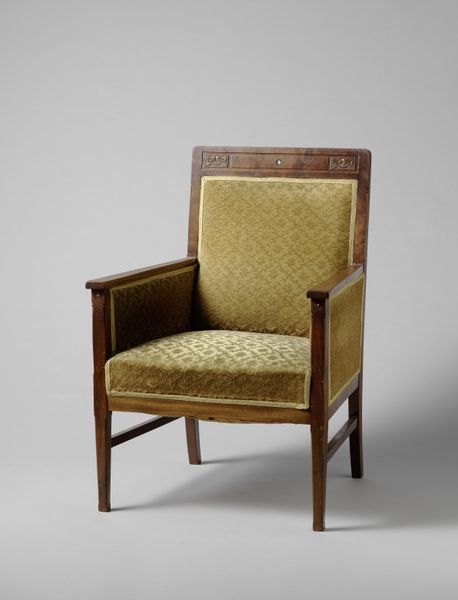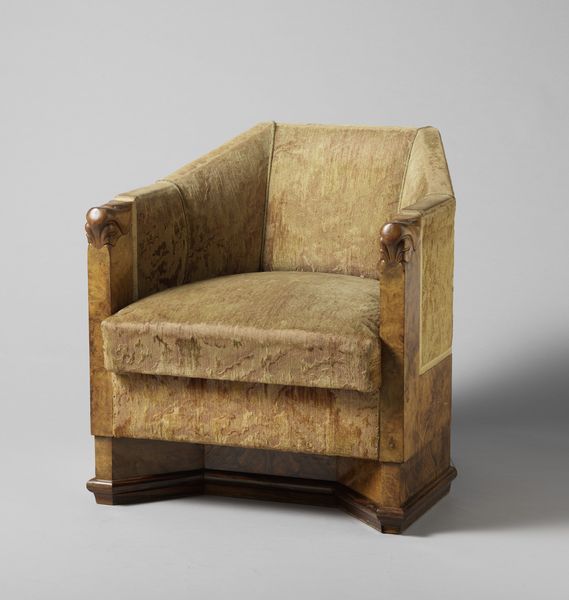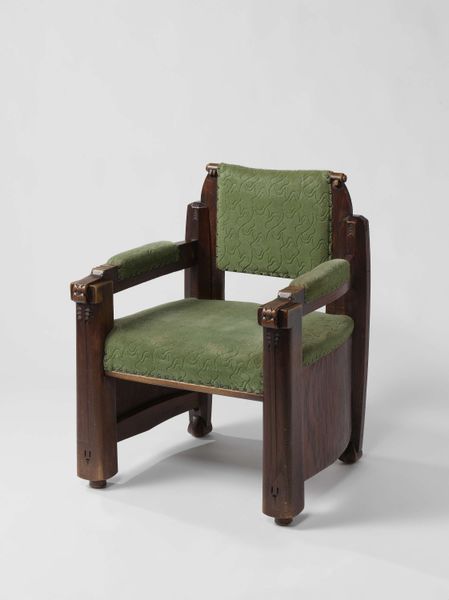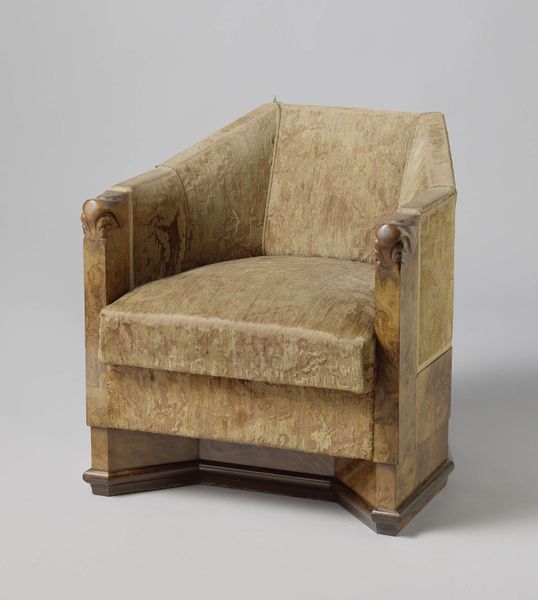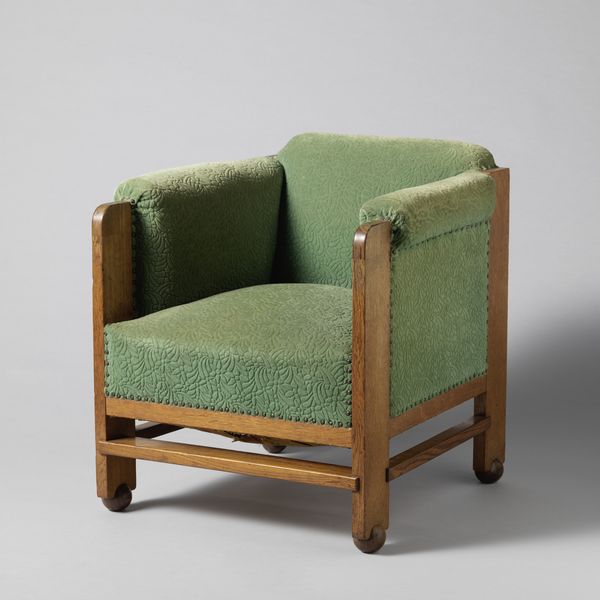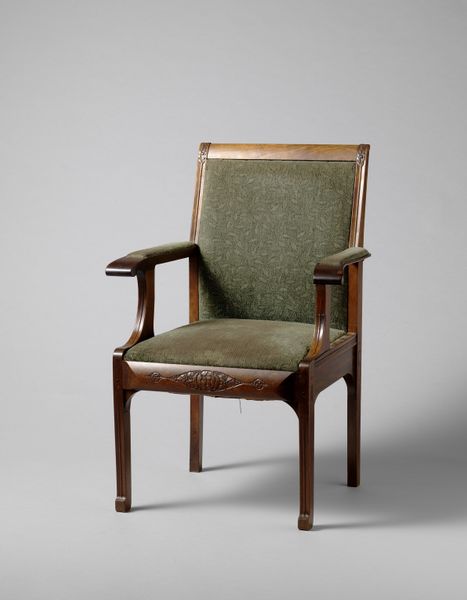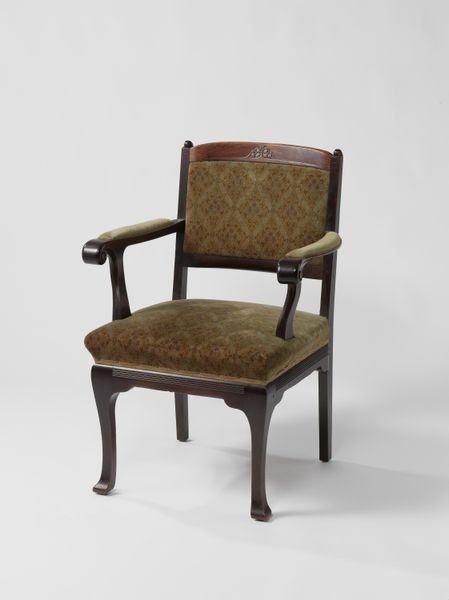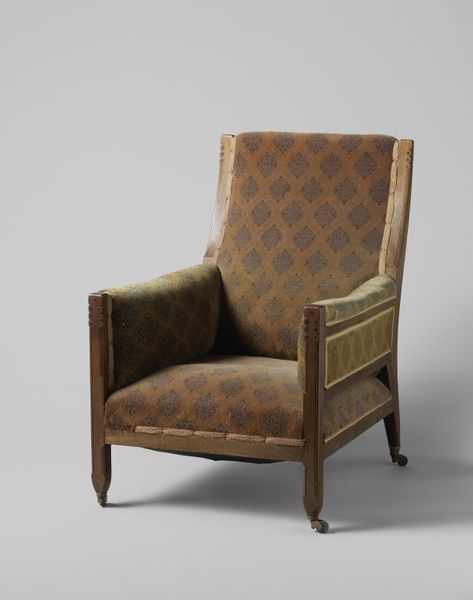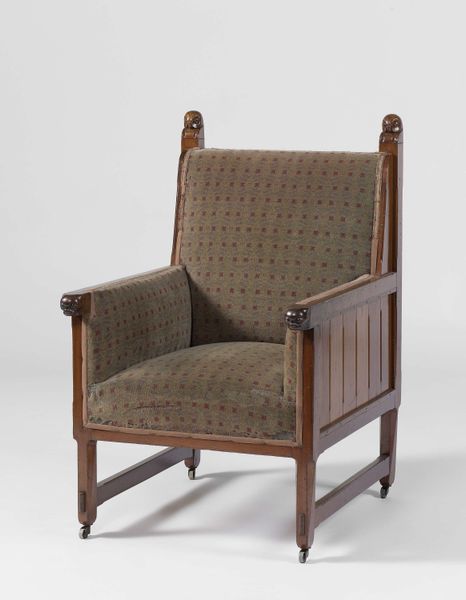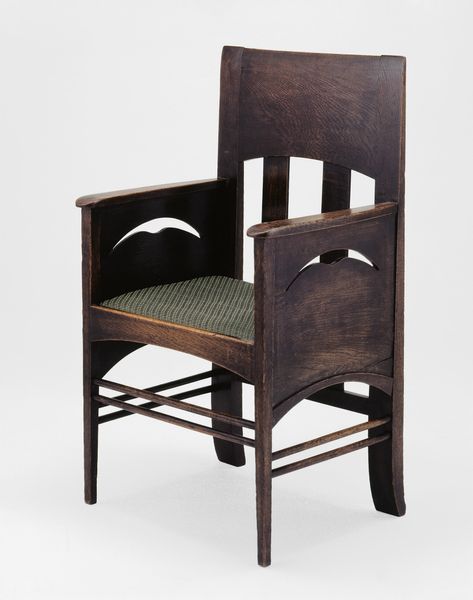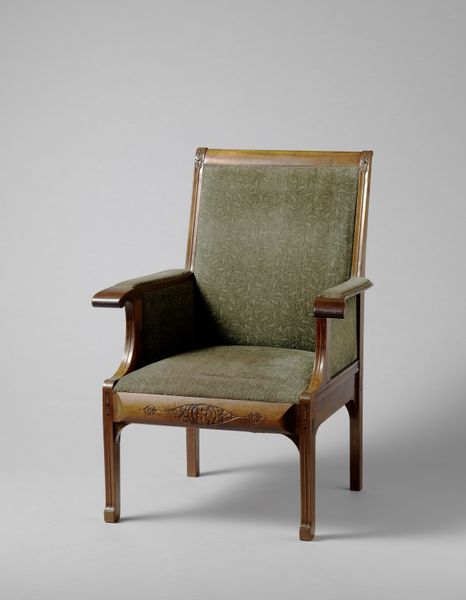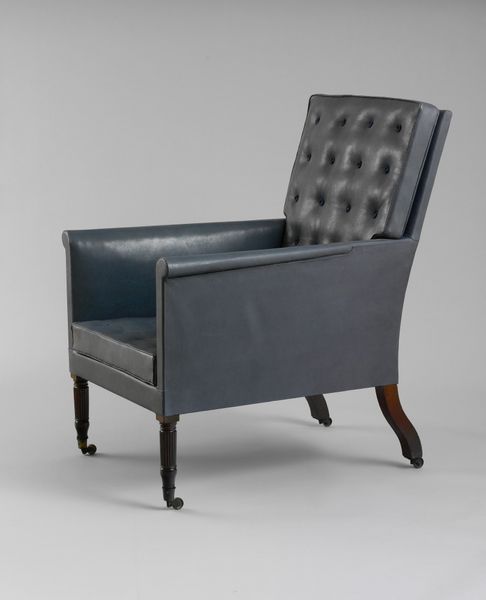
Fauteuil met lage rugleuning en bekleed met een beige stof met een bruin ruitmotief c. 1921
0:00
0:00
Dimensions: height 78.0 cm, width 80.0 cm, depth 78.0 cm, weight 26.6 kg
Copyright: Rijks Museum: Open Domain
This low-backed armchair was made by Wim Schuhmacher, using wood and patterned textile. Notice the chair’s substantial oak frame, its surface worked to a subtle sheen, and its robust joinery. These details speak to traditional woodworking techniques. Upholstery introduces a softer counterpoint, with its beige fabric patterned with brown diamonds. The fabric itself is a product of mechanized textile production, a contrast to the handmade quality of the frame. Schuhmacher here seems to be harmonizing craft and industry. The chair's design blends clean lines with a comforting, domestic aesthetic. This hints at the social context of its creation: a time of increasing industrialization when designers were actively exploring ways to integrate machine production with human comfort. Considering this piece, it’s clear that understanding the materials and processes used is key to appreciating its broader cultural significance. This approach challenges the divide between ‘art’ and ‘craft,’ urging us to recognize the value and meaning embedded in all forms of making.
Comments
No comments
Be the first to comment and join the conversation on the ultimate creative platform.


